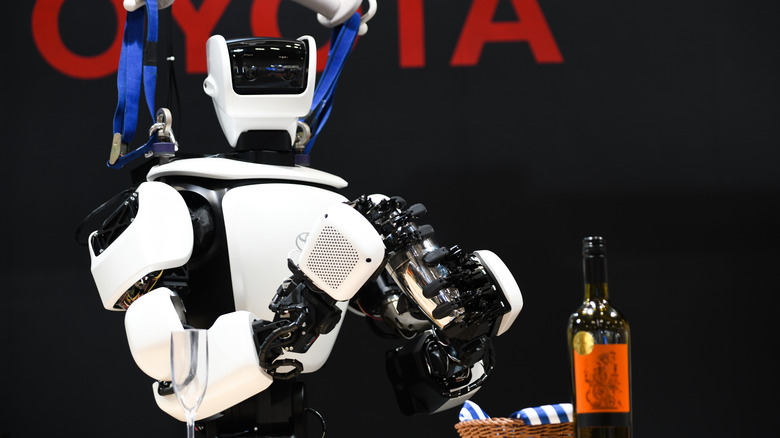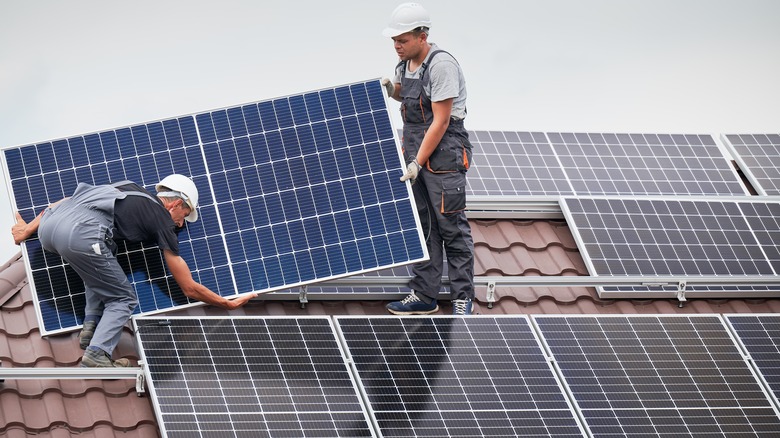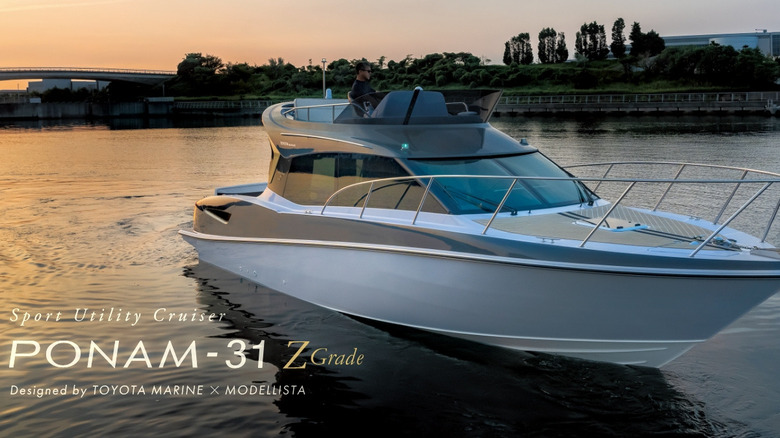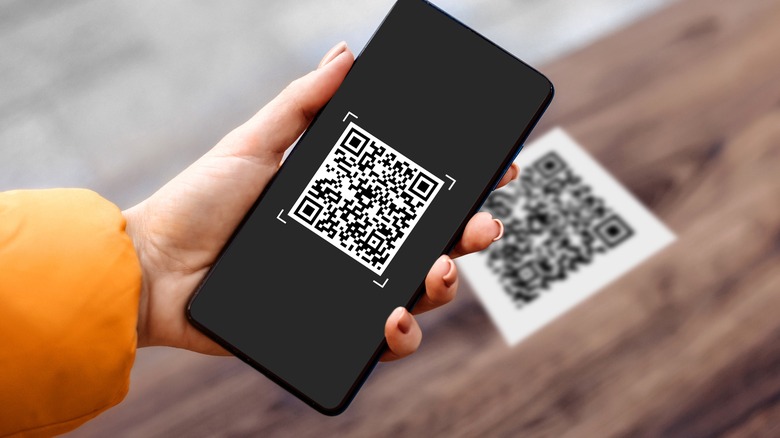5 Unexpected Products You Didn't Know Were Made By Toyota
Ask anyone what Toyota makes, and they're likely to say cars. The few exceptions may involve people going into specifics, and referencing something like the company's pickups or hybrid vehicles. But the Japanese manufacturer actually makes a lot more than that.
Toyota is a huge company, and even relatively specialized businesses often have side projects for research, philanthropy, or heritage reasons. The company itself has numerous technology interests, a historic connection to textiles, a hand in the construction trade, and even produces alternative methods of transport.
Here we've singled out five of the company's more obscure interests, and while the company philosophy may leak into many of them, they aren't things you would closely associate with automotive manufacture. One of the company's creations is now something most businesses use, and is likely something you'll encounter every other day. Others are a bit more obvious, and may be something you'll have spotted similar companies investing in too.
Toyota makes some pretty cool robots
It may not be shocking that robots crop up on the list of things Toyota makes on the side. Car companies and robotics seem to go hand in hand. Fellow Japanese giant Honda famously has ASIMO — a robot that can sort of walk on two legs. Then there's Elon Musk's promises to save us from our domestic burdens with an affordable, human-like, "Tesla Bot" within the next few years.
Toyota has developed a few robots in its time, and some have broken records — though they do operate in an extreme niche. A basketball-playing robot designed to nail free throws managed to make 2020 baskets in a row back in 2019, achieving a spot in Guinness' book as a result. Then there's THR-3, which isn't powered by an AI that may one day turn on us, but is instead controlled by a man in a weird suit. An earlier bot comes in the form of Kirobo Mini — a cute little thing unveiled in 2015 that was designed to live in your car. The Mini's big brother (just Kirobo) was the first humanoid robot to take a trip to the International Space Station, but hasn't really achieved much else.
Toyota builds houses to make life greener and more comfortable
Toyota joins defunct clothing outlet Sears on the list of companies that, for some reason, also build pre-fabricated houses. The auto manufacturer entered the construction industry out of a "strong desire to provide better homes for families in Japan." It also aims "to provide a lifetime of total satisfaction," though if you have a western view on housing, that may seem a little below par. Ideally, a good house can last upwards of a hundred years if not longer — a bit beyond the average human lifespan.
The company is also applying similar philosophies to both its housing and automotive departments. On its website, it talks about the development of environmentally friendly "Zero Energy Houses" that achieve net zero through a combination of solar power, insulation, and highly efficient appliances. So if you've ever wished you could live in a four-walled version of a Prius, it may be time to move to Japan.
Turns out the Toybota wasn't a joke
A Toyota won't just get you around on land, you can also go sailing in one. However, you should make sure you're actually going in one of the boats the Aichi-based company produces. Toyota actually produces a wide variety of watercraft, including powerboats and cruisers. While its maritime division does produce watercraft, the runs of each boat are pretty limited to help keep the focus on quality rather than quantity. It's also likely limited by the fact Toyota is best known for, and makes most of its money from, land vehicles.
Toyota's time in the marine market wasn't all smooth sailing either. One of its boat building divisions "Toyota Marine" briefly sunk in 2001 following a buyback of its "Epic 21" series of boats. The buyback was caused by a serious issue the boats had, which caused a loss of control at speed. An error in manufacturing caused distortion in the hull, which in turn caused a situation known as "chine lock" when the boat pilot was gunning it. Chine lock occurs when turbulent water and air accumulate under the boat, rendering its rudder ineffective.
If you insist on hitting the water with the wheeled variety, that's also possible ... sort of. Top Gear presenter Jeremy Clarkson managed to convert one of the company's notoriously indestructible Hilux pickups into a somewhat functional watercraft a few years ago. However, it is worth noting his outboard of choice was made by Honda.
Sewing machines are part of its heritage
Toyota has been manufacturing sewing machines for longer than it has manufactured cars. It produced its first sewing machine back in 1924, and actually started life as a loom company. Its first vehicle wasn't produced until almost a decade later in 1933.
By all accounts, Toyota's sewing machines are also very good. Sources describe them as robust and reliable, while also being capable of tackling tough fabrics like jeans. There is also a wide array of spare parts available, so if you're looking for a vintage model, or have an heirloom you want to keep going, it should be just as easy to source parts for as a classic Land Cruiser. It's probably a touch quicker and easier to work on, too.
Sadly, only a limited number of the company's sewing machines were available in the U.S., and those models seem to have been discontinued. So if you really want a Toyota sewing machine, going vintage may be your only option. Alternatively, you can do what JDM fans longing for a Toyota crown had to do before its recent return and just import one.
The QR Code
QR codes started appearing absolutely everywhere a few years ago, and it's easy to see why. A relatively minute square can hold a lot of information. A quick scan with something like a phone's camera can then unlock that information and relay the scanner to a specific web page, or input WiFi details, or connect two devices. The sky is the limit.
So that's why you'll see them on advertisements, promotional material, social media sites, business cards, and everything else. But they're a lot older than you think, and they come from what may be an unexpected source. They were actually invented around 30-years ago, in Japan, by a company called Denso Wave. Like Lexus, Mazda, and Subaru, Denso Wave is one of Toyota's subsidiaries. So the Japanese megacorp can technically claim to be the inventor of the square, barcode-like, medium.
Its original purpose is car-related too. QR codes were originally designed to label auto parts, which is pretty handy when your parent company manufactures millions of vehicles per year. So next time you're easily connecting to a friend's WiFi or being referred to a product's online instruction manual, thank Toyota.



